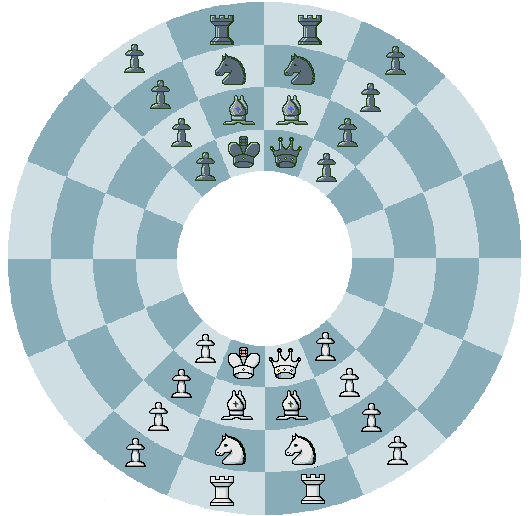

Circular Chess is played on a circular board of 64 spaces in 4 concentric rings of 16 spaces each. There is no castling and no ’en passant’ capture. The pawns that start on opposite sides of the board move in opposite directions. Pawns promote when they reach the opponent’s initial positions for the major pieces. Rooks and Queens cannot end a move on the same space from which they started (cannot go full circle). The rook is more valuable in this variant compared with standard chess. It’s worth more than two light pieces. The light pieces seem to be worth less than three pawns. Probably a light piece can, at times, be exchanged for two pawns.
Circular boards were in use during the Byzantine period, and some form of round chess is believed to have been known to theoreticians already in the 12th century. Round chess seems to have undergone a brief revival in London and in Calcutta, India, in the late 18th century. Today’s Circular Chess is inspired from medieval Byzantine Chess, and was invented in 1983 by Dave Reynolds.
See also Circular Chess.
• You can download my free Circular Chess program here (updated 2007-02-08), but you must own the software Zillions of Games to be able to run it (I recommend the download version).
• You can play Circular Chess per e-mail here.
• Don’t miss my other chess variants.
© M. Winther (February 2007).